Charles E W Bean, Diaries, AWM38 3DRL 606/80/1 - May - June 1917 - Part 1
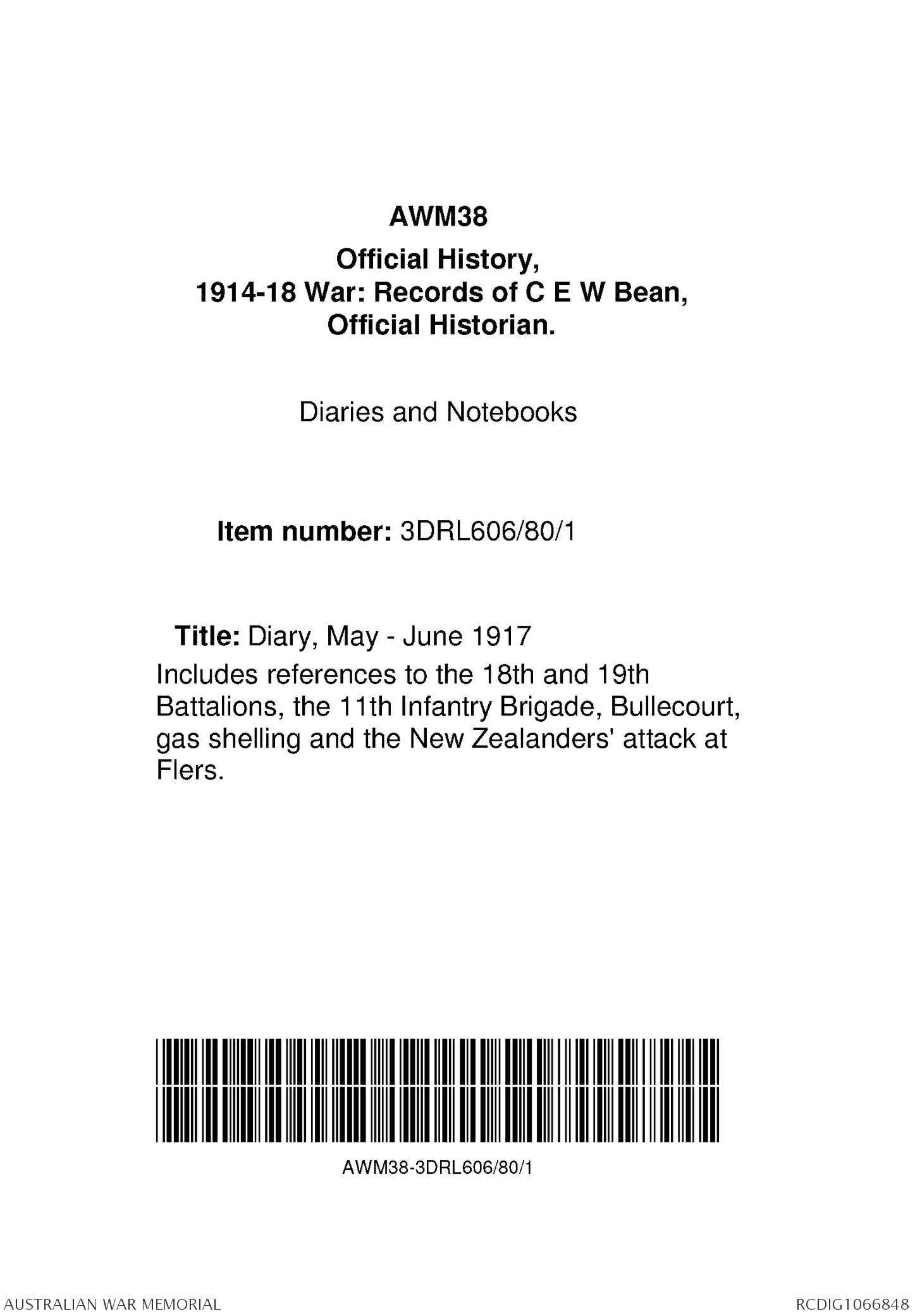
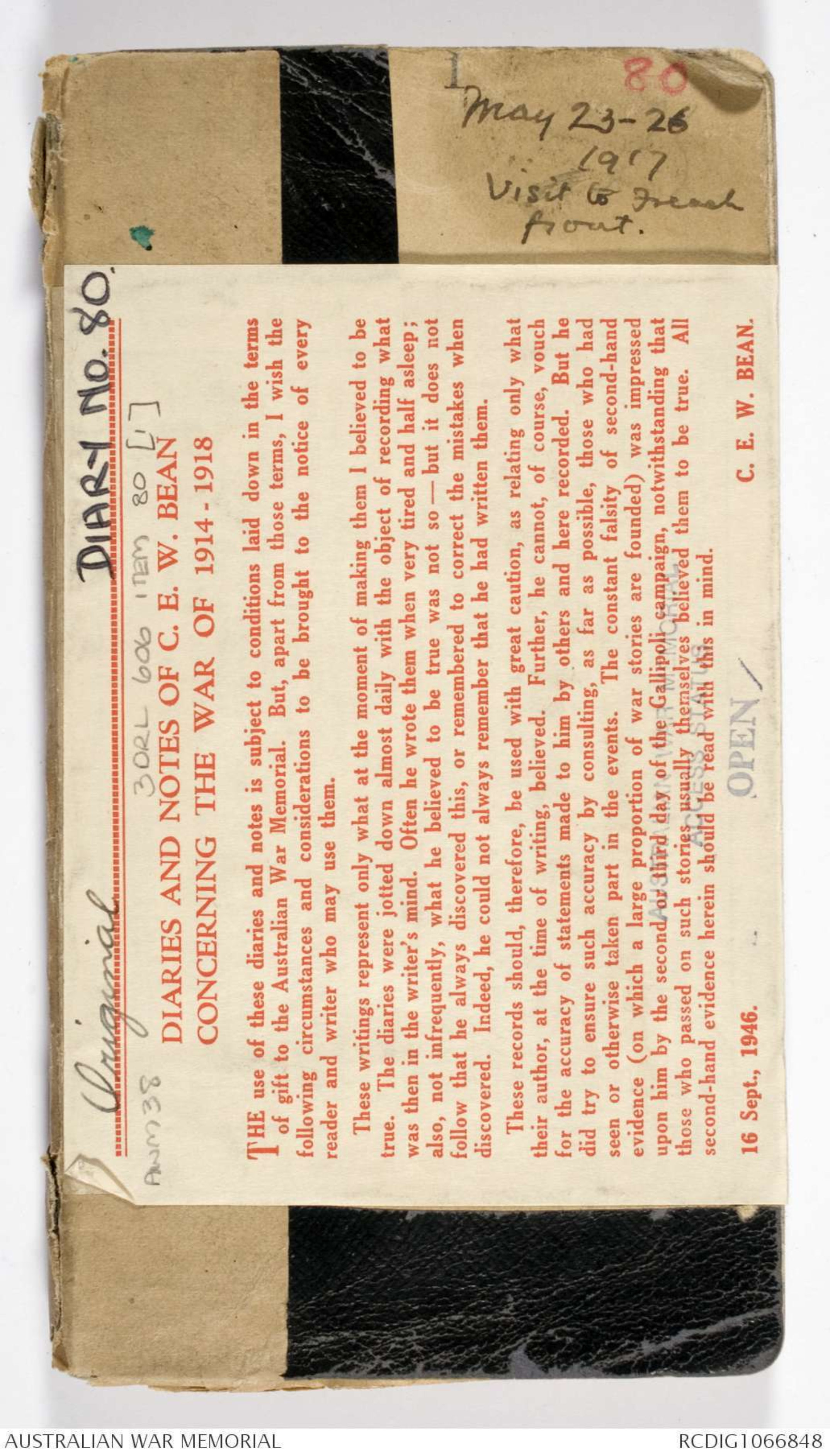
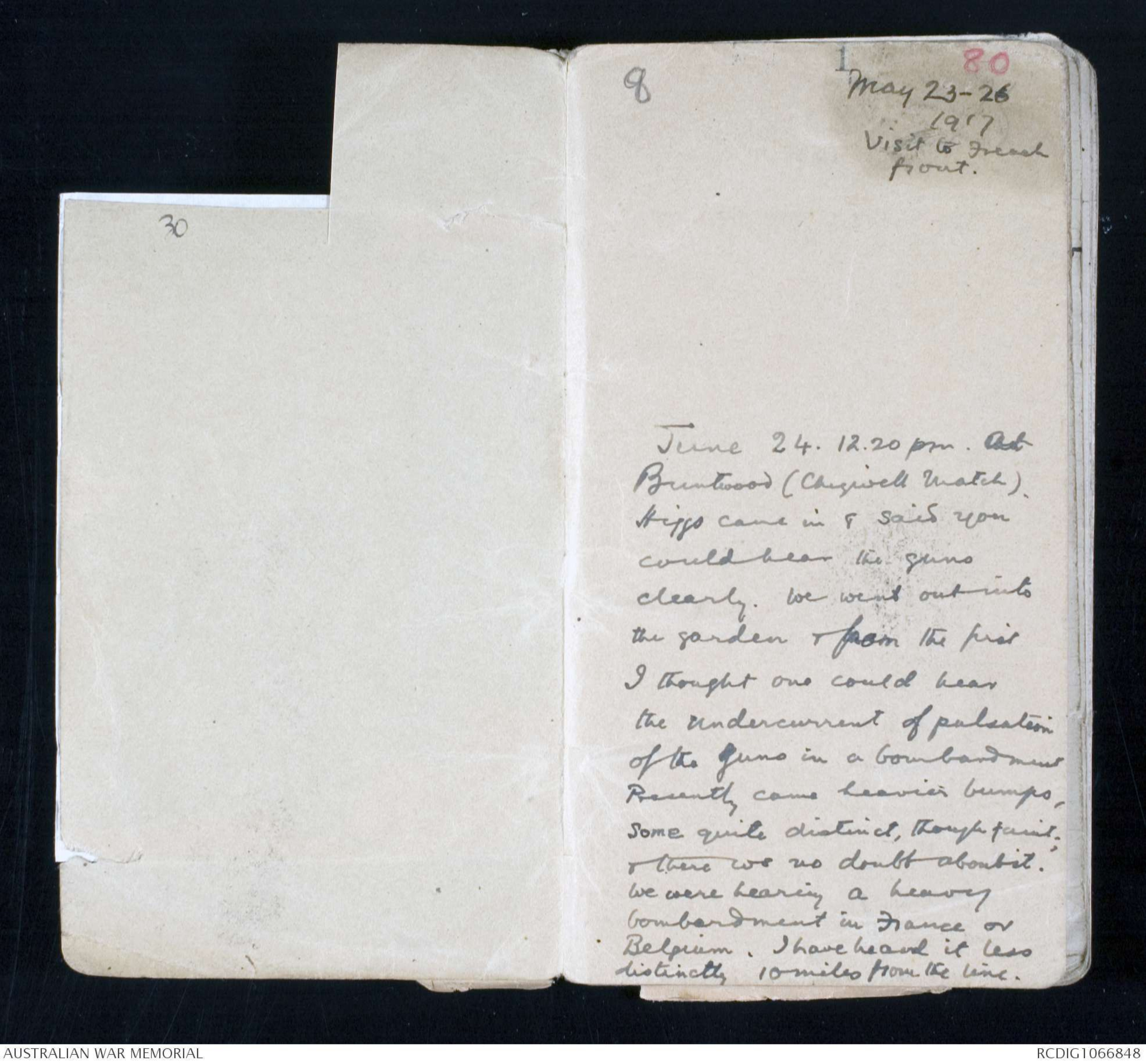
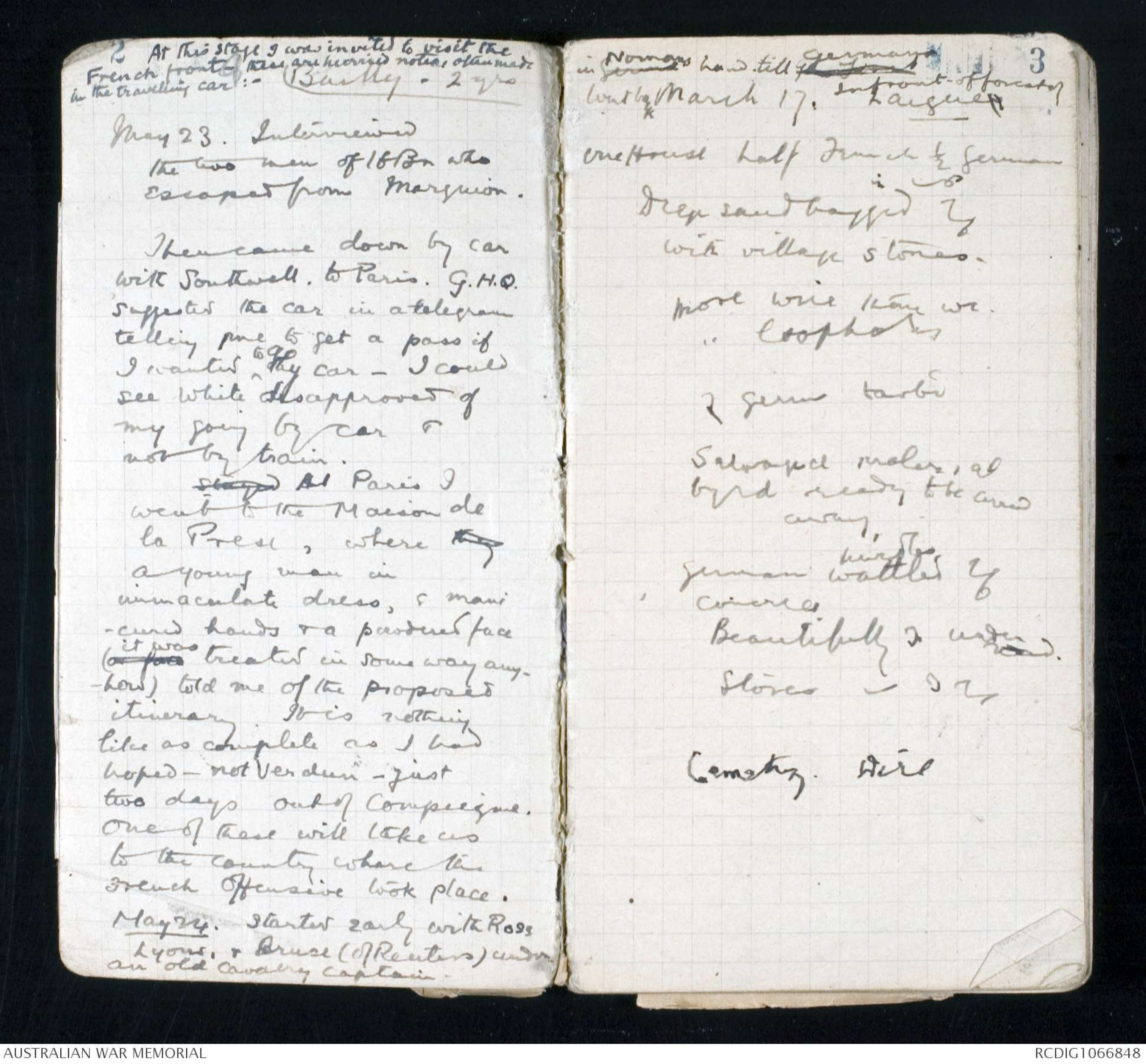
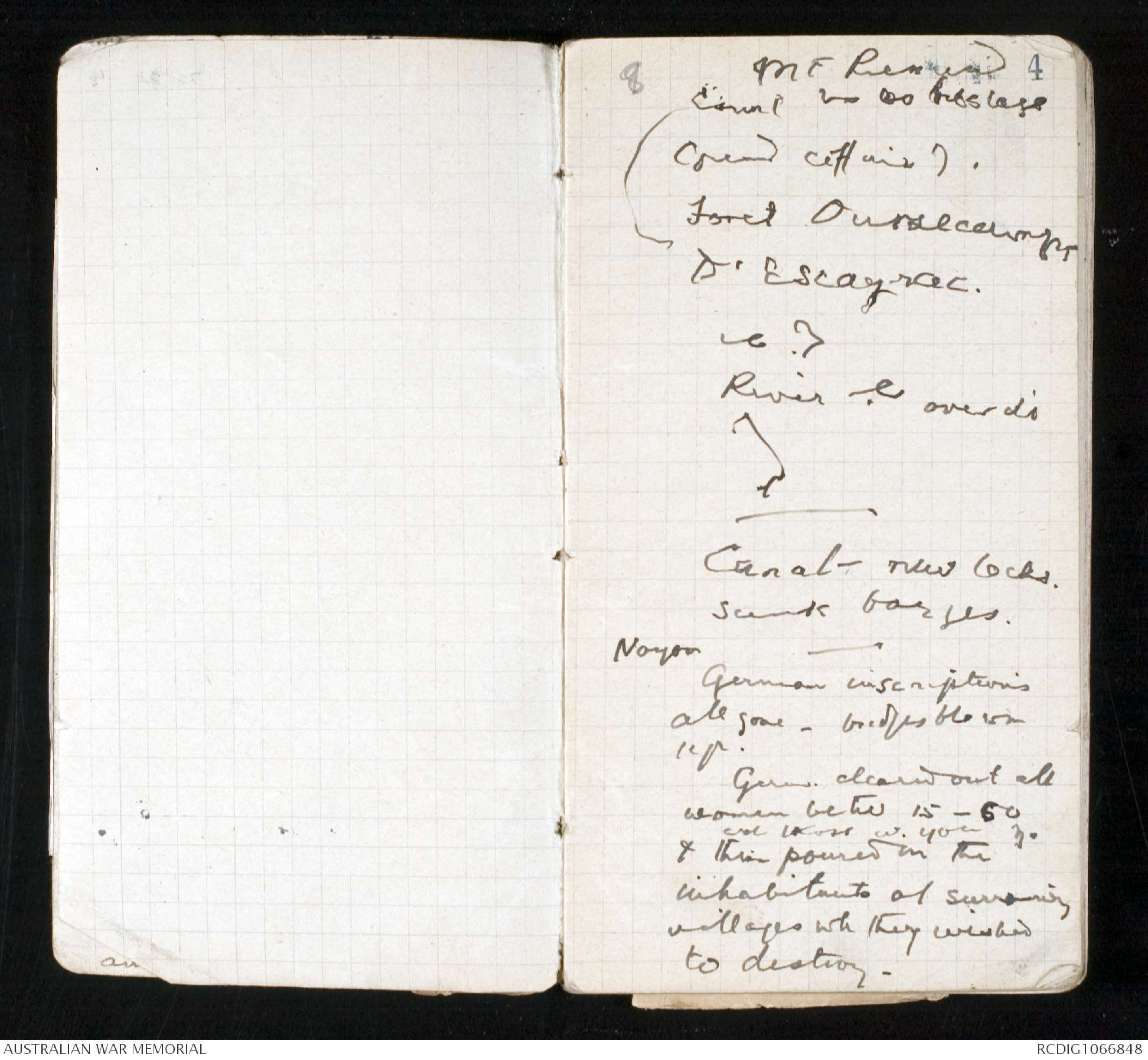
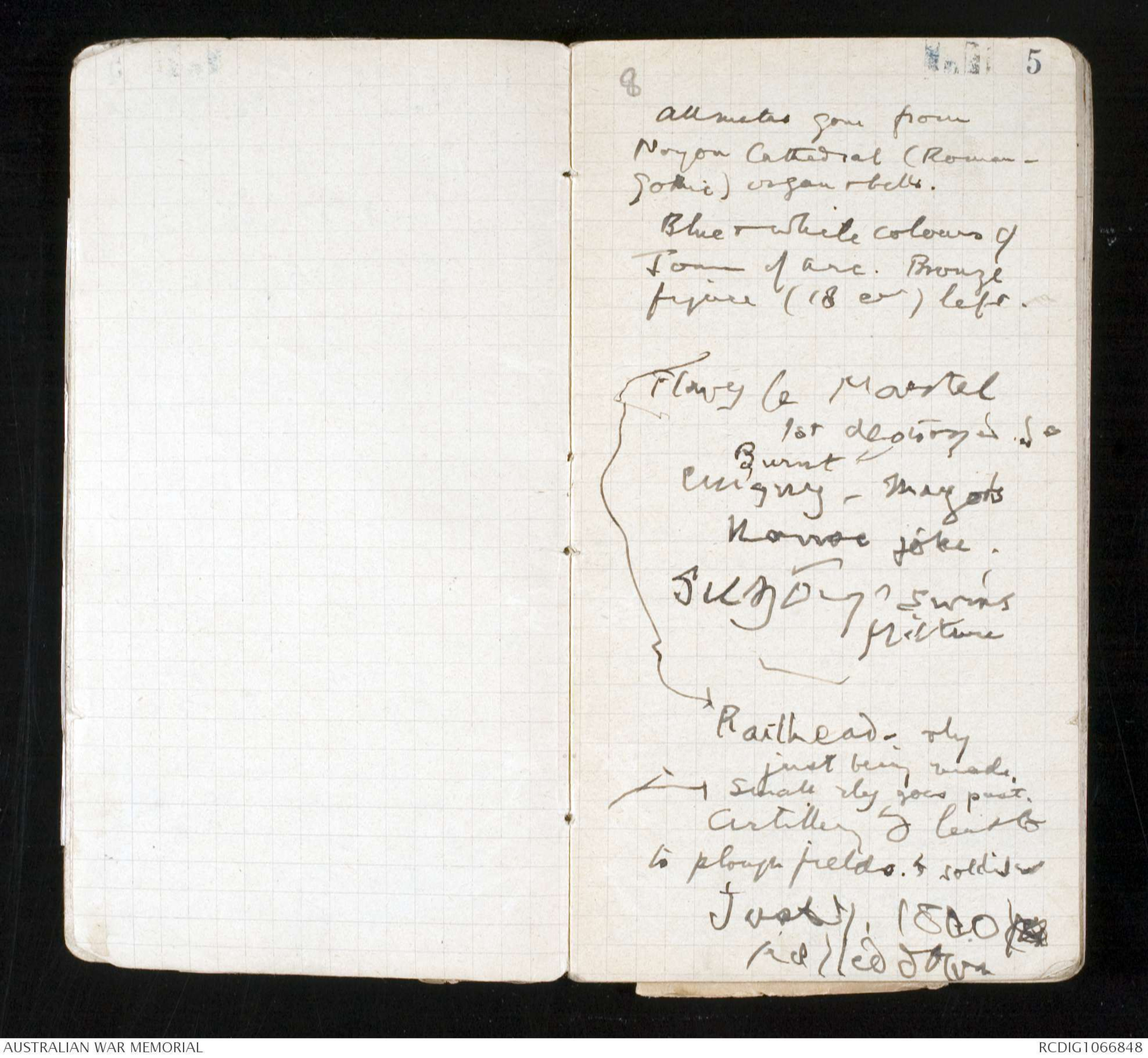
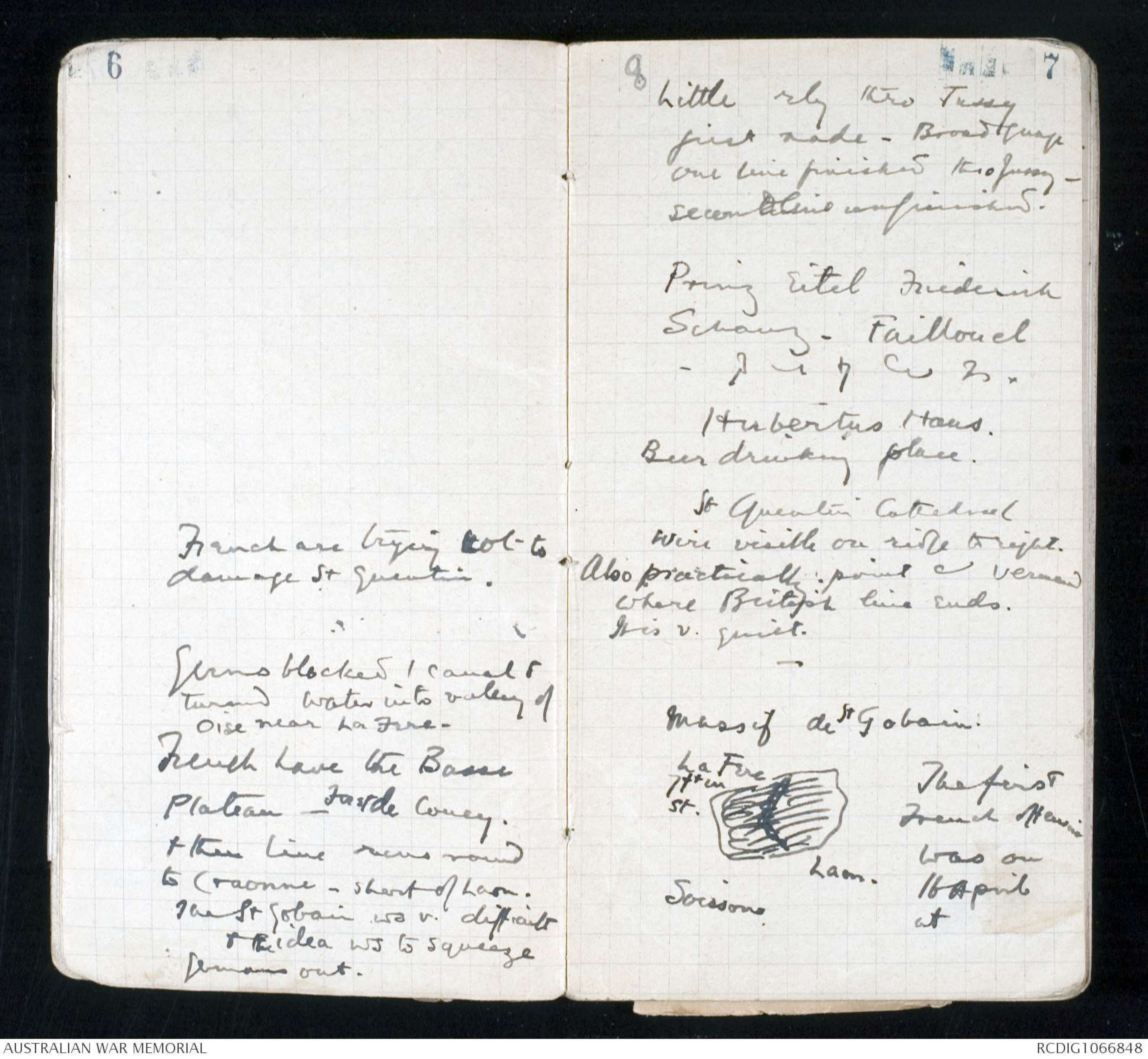


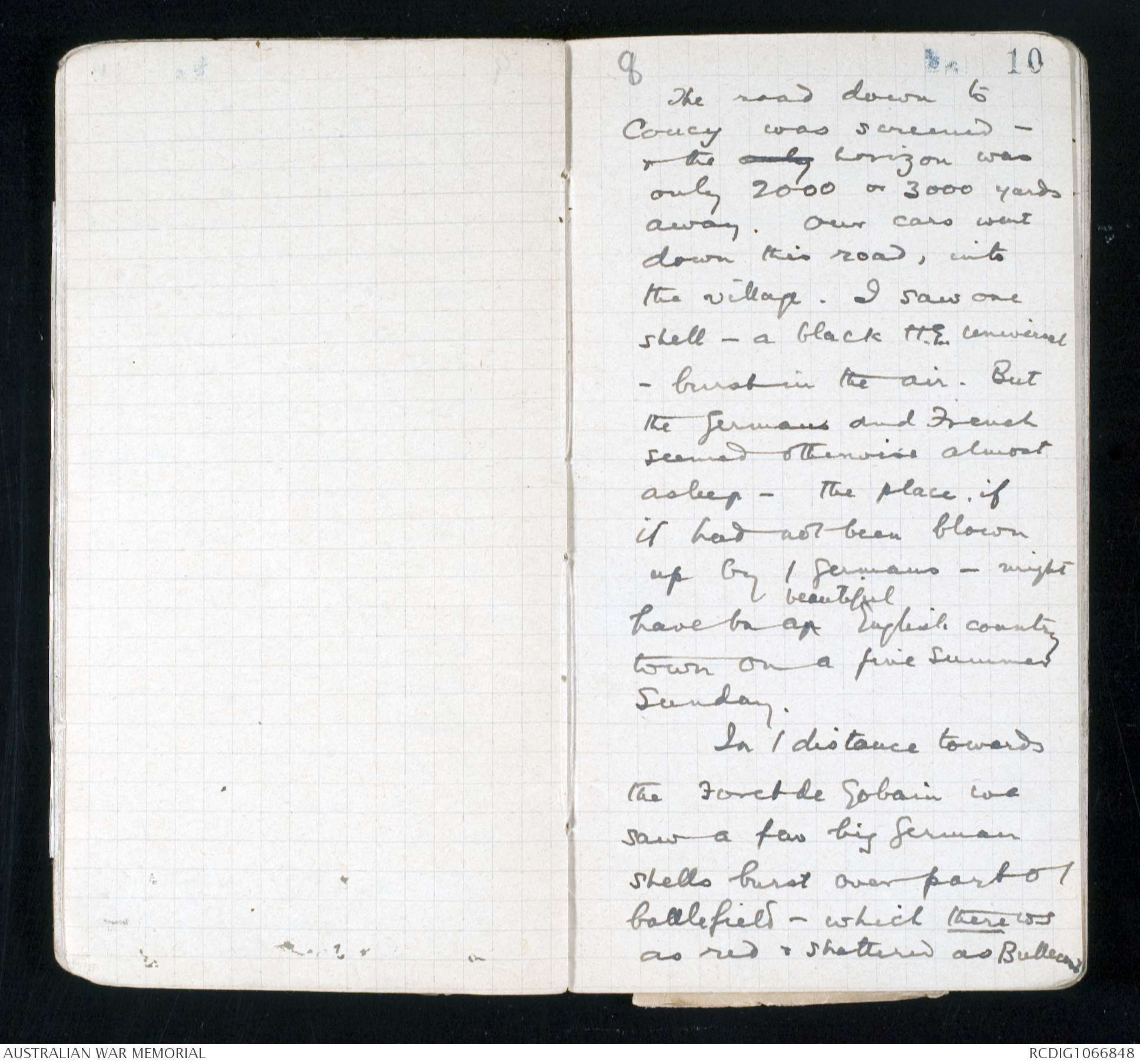
AWM38
Official History,
1914-18 War: Records of C E W Bean,
Official Historian.
Diaries and Notebooks
Item number: 3DRL606/80/1
Title: Diary, May - June 1917
Includes references to the 18th and 19th
Battalions, the 11th Infantry Brigade, Bullecourt,
gas shelling and the New Zealanders' attack at
Flers.
AWM38-3DRL606/80/1
1 80
May 23-26
1917
Visit to French
front.
Original DIARY NO. 80.
AWM38 3DRL 606 ITEM 80 [1]
DIARIES AND NOTES OF C. E. W. BEAN
CONCERNING THE WAR OF 1914 - 1918
THE use of these diaries and notes is subject to conditions laid down in the terms
of gift to the Australian War Memorial. But, apart from those terms, I wish the
following circumstances and considerations to be brought to the notice of every
reader and writer who may use them.
The writings represent only what at the moment of making them I believed to be
true. The diaries were jotted down almost daily with the object of recording what
was then in the writer's mind. Often he wrote them when very tired and half asleep;
also, not infrequently, what he believed to be true was not so - but it does not
follow that he always discovered this, or remembered to correct the mistakes when
discovered. Indeed, he could not always remember that he had written them.
These records should, therefore, be used with great caution, as relating only what
their author, at the time of writing, believed. Further, he cannot, of course, vouch
for the accuracy of statements made to him by others and here recorded. But he
did try to ensure such accuracy by consulting, as far as possible, those who had
seen or otherwise taken part in the events. The constant falsity of second-hand
evidence (on which a large proportion of war stories are founded) was impressed
upon him by the second or third day of the Gallipoli campaign, notwithstanding that
those who passed on such stories usually themselves believed them to be true. All
second-hand evidence herein should be read with this in mind.
16 Sept., 1946. C. E. W. BEAN.
AUSTRALIAN WAR MEMORIAL
ACCESS STATUS
OPEN
30
1 80
8
May 23 -26
1917
Visit to French
front.
June 24. 12.20pm. At
Brentwood (Chigwell Match).
Higgs came in & said you
could hear the guns
clearly. We went out into
the garden & from the first
I thought one could hear
the undercurrent of pulsation
of the guns in a bombardment
Presently came heavier bumps,
some quite distinct, though faint;
& there ws no doubt about it.
We were hearing a heavy
bombardment in France or
Belgium. I have heard it less
distinctly 10 miles from the line.
2
At this stage I was invited to visit the
French front - these are hurried notes, often made
in the travelling car:- Bailly - 2 yrs
May 23. Interviewed
the two men of 16 Bn who
escaped from Marguion.
Then came down by car
with Southwell. to Paris. G.H.Q.
suggested the car in a telegram
telling me to get a pass if
I wanted ^ to go by car - I could
see White disapproved of
my going by car &
not by train.
Stayed At Paris I
went to the Maison de
la Presi, where they
a young man in
immaculate dress, & manicured
hands & a powdered face
(or face ^ it was treated in some way anyhow)
told me of the proposed
itinerary. It is nothing
like as complete as I had
hoped - not Verdun - just
two days out of Compiegne.
One of these will take us
to the country where the
French offensive took place.
May 24. Started early with Ross
Lyons, & Bruce (of Reuters) under
an old Cavalry Captain.
3
in Germ Nomansland till the Foret Germans
went by March 17, in front of forest of Laignes
One House half French ½ German
in Nomansland
Deep sandbagged trenches
with village stones.
More wire than wc.
" loopholes
Especially Germs barbed
Salvaged [mortar?], as
by rd ready to be carried
away.
German hurdles wattled trenches
covered
Beautifully drained under road.
Stores in front trench
Cemetery. Wire
8
4
Mt Renaud
Count [shorthand] [[?]] [[?slage?]]
Opened [[caffeine?]] from the
Foret Oursecamps
D'Escagnac.
New bridge
River rising over [[its?]]
bridge
Canal - new locks.
Sunk barges.
Noyon
German inscriptions
all gone - bridges blown
up.
Germ. cleared out all
women betw 15-60
and those w. you children.
& then poured in the
inhabitants of surrounding
villages wh they wished
to destroy.
8
5
All metal gone from
Noyon Cathedral (Roman -
Gothic) organ & bells.
Blue & white colours of
Joan of Arc. Bronze
figure (18 century) left.
Flavy le Martel
1st destroyed town &
Burnt away
Cugny - Magots
House joke;
Suzoy - swans
picture
Railhead - rly
just being made.
Hand drawn diagram - see original document
Small rly goes past.
Artillery horses lent to
to plough fields. Heard soldiers
Just 1800 xxx
killed down
6
French are trying not to
damage St Quentin.
Germs blocked / canal &
turned water into valley of
Oise near La Fere.
French have the Basse
Plateau - Foret de Coucy.
& then line runs round
to Craonne - short of Laon.
The St Gobain ws v. difficult
& the idea ws to squeeze
Germans out.
8
7
Little rly thro Tussy
just made - Broad guage
one line finished thro Jussy -
second line unfinished.
Prinz Eitel Friederich
Schauz - Faillouel
- French now destroy everything German.
Hubertus Haus.
Beer drinking place.
St Quentin Cathedral
Wire visible on ridge to right.
Also practically point near Vermand
where British line ends.
It is v. quiet.
Massif de St Gobain.
Hand drawn diagram - see original document
The first
French offensive
was on
16 April
at
8
8
Chauny - well
screened - blown to
bits by Germans, like [shorthand].
(Palais de Justice.)
Soldatenheim - blotted out
on 21st April.
They told people to stay
in Faubourg de Noyon -
then shelled suburb
where they were -
18 or 20 were killed.
More professional
Better Staff work
than ours
: Point de vue de
l'enemi ici.
Extinguish lights.
Gas!
Better screening.
German permits.
Germans blew down Chateau
de Coucy tower as they sd it
gave observation. 20 tons of
dynamite blew it up.
8
9
Generally - the French
front seemed extraordinarily
quiet. While we watched
about 10 miles of line
near St Quentin, southwards,
not one shell burst in
half an hour & I only
heard one gun - & that
may have been a bomb
at a school. We were
taken, by special request,
to Coucy. The Germs
The old castle tower
there has been blown
down - the Germans
destroyed everything within
a certain distance of
the Hindenburg line, which
seems to me to have been
why they left Noyon -
(but they may have been
too hurried there).
8
10
The road down to
Coucy was screened -
& the only horizon was
only 2000 or 3000 yards
away. Our cars went
down this road, into
the village. I saw one
shell - a black H.E. universal
- burst in the air. But
the Germans and French
seemed otherwise almost
asleep - the place . if
it had not been blown
up by / Germans - might
have bn a ^beautiful English country
town on a fine summer
Sunday.
In / distance towards
the Foret de Gobain we
saw a few big German
shells burst over part o /
battlefield - which there ws
as red & shattered as Bullecourt
 Deb Parkinson
Deb ParkinsonThis transcription item is now locked to you for editing. To release the lock either Save your changes or Cancel.
This lock will be automatically released after 60 minutes of inactivity.